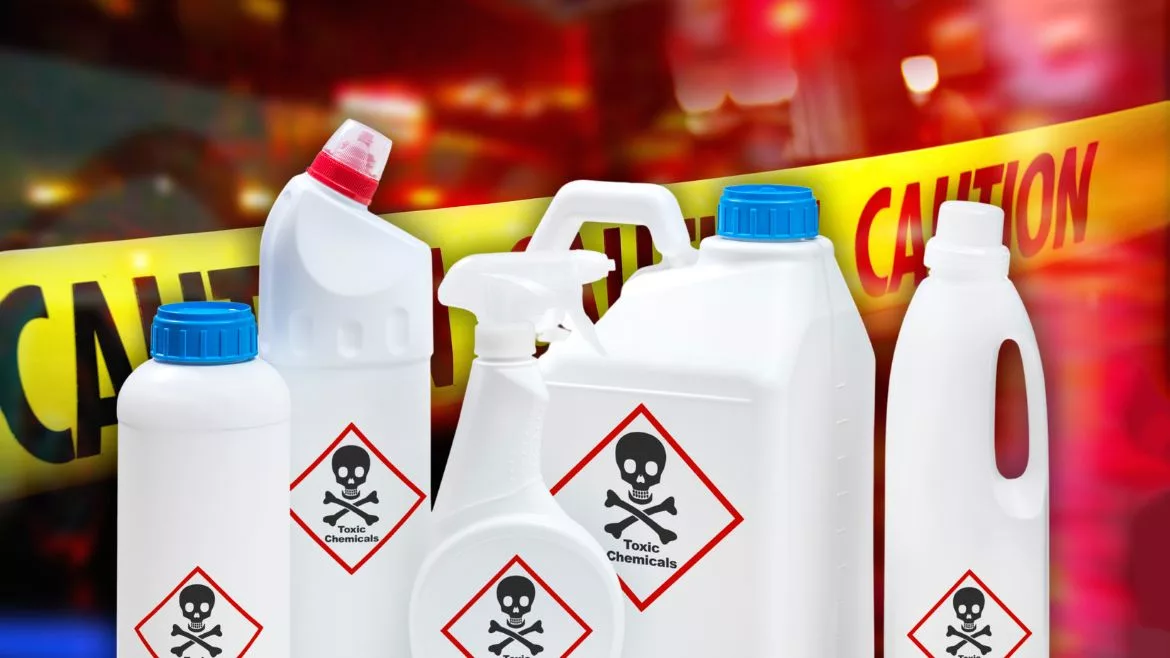News
PFAS Guidance Documents Issued by EPA
The documents cover destroying PFAS waste and ending the use of cleaning materials containing PFAS.

In the two days before the Environmental Protection Agency (EPA) issued a final rule setting drinking water standards for five per-and poly-fluoroalkyl substances (PFAS), the EPA issued updated guidance on destroying PFAS waste and a document directing federal facilities to no longer use cleaning products containing PFAS chemicals.
EPA issued the guidance document on April 8, 2024, and the directive on April 9 to reduce “the potential for these chemicals to enter the environment” by helping federal agencies, states, other agencies, and private industry to destroy or dispose of items containing PFAS chemicals, as well as ending their use in cleaning materials, said Matt Klasen, manager of the EPA’s PFAS Council.
The guidance document and directive help those agencies “get a better sense of the science” of PFAS chemicals so they “can make better decisions” regarding PFAS, Klasen said on April 11 during a presentation at the National Water Resources Association policy conference in Washington, D.C.
On April 8, 2024, the EPA issued the “Interim Guidance of the Destruction and Disposal of Perfluoroalkyl and Polyfluoroalkyl Substances and Materials Containing Perfluoroalkyl and Polyfluoroalkyl” that contains a new framework to evaluate technology so technology developers can assess emerging innovative destruction and disposal methods, Klasen said.
The latest guidance updates a version of that document that was first issued in 2020 “with some new science and some better recommendations about what we know and what we don't know about different technologies for destroying or disposing of PFAS,” Klasen said. “We know there’re a lot of new technologies that have existed since 2020 when we did the first version of this document,” he said.
Klasen said the updated guidance focuses on three main technologies: underground injection, landfills, and thermal treatment, which includes incineration. The guidance describes new EPA test methods and improved screening tools to identify and prioritize safeguards for communities located near destruction and disposal facilities and overburdened by pollution. It can help government officials and private industry make informed decisions on PFAS destruction and disposal technologies and aid in implementing forthcoming rules to protect public health from exposure to PFAS.
The updated guidance examines the latest science so managers of PFAS wastes can use that information to evaluate for use that their facility the most appropriate destruction, disposal, or storage method among those currently available. The guidance also recommends that decision-makers prioritize using technologies with the lowest potential for environmental release to better protect communities from PFAS exposures.
“We (EPA) really lay out what we know, what we don't know, and what research we still need to do to better understand these approaches” and to evaluate “which of those technologies are more likely to remove PFAS,” he said.
In addition, on April 16, 2024, the EPA opened for comments on the updated guidance document on destroying PFAS waste. All comments must be identified by the docket identification number: EPA-HQ-OLEM-2020-0527, and can be sent by any of the following methods:
Federal eRulemaking Portal (the EPA’s preferred method). Follow the online instructions for submitting comments.
Mail, send to: U.S. Environmental Protection Agency, EPA Docket Center, OLEM Docket, Mail Code 28221T, 1200 Pennsylvania Ave., NW, Washington, D.C. 20460.
Hand Delivery or Courier (by scheduled appointment only): EPA Docket Center, WJC West Building, Room 3334, 1301 Constitution Ave., NW, Washington, D.C. 20004. The Docket Center’s hours of operation are 8:30 a.m.–4:30 p.m., Monday–Friday (except federal holidays).
On April 9, 2024, the EPA announced that the General Services Administration (GSA) would direct federal agencies and government contractors to purchase cleaning products for federal buildings free of PFAS chemicals. Contractors will be required to use products certified to meet strict criteria for human health and the environment by using effective, safer chemical alternatives, EPA says.
Currently, GSA’s Public Buildings Service has more than 600 contracts for custodial services at more than 1,500 federally owned buildings, costing more than $400 million per year. According to the EPA, within five years, most of those contracts will include the new specifications requiring contractors to use cleaners and hand soaps that do not contain intentionally added PFAS chemicals.
“We (EPA) think that steps like this can significantly help reduce the amount of PFAS that exists in our daily lives that may wash into sewers and end up in wastewater treatment facilities,” Klasen said.
By updating the interim guidance document and by collaborating with the GSA, EPA can “help get upstream of the problem and prevent this contamination in the first place,” Klasen said.
Click here to read the updated Interim Guidance on the Destruction and Disposal of Perfluoroalkyl and Polyfluoroalkyl Substances and Materials Containing them.
Click here to read the announcement of the collaboration between EPA and GSA.
Looking for a reprint of this article?
From high-res PDFs to custom plaques, order your copy today!








